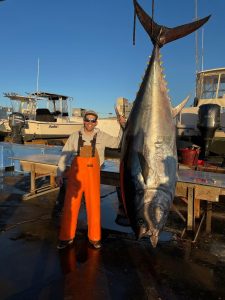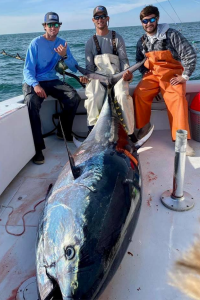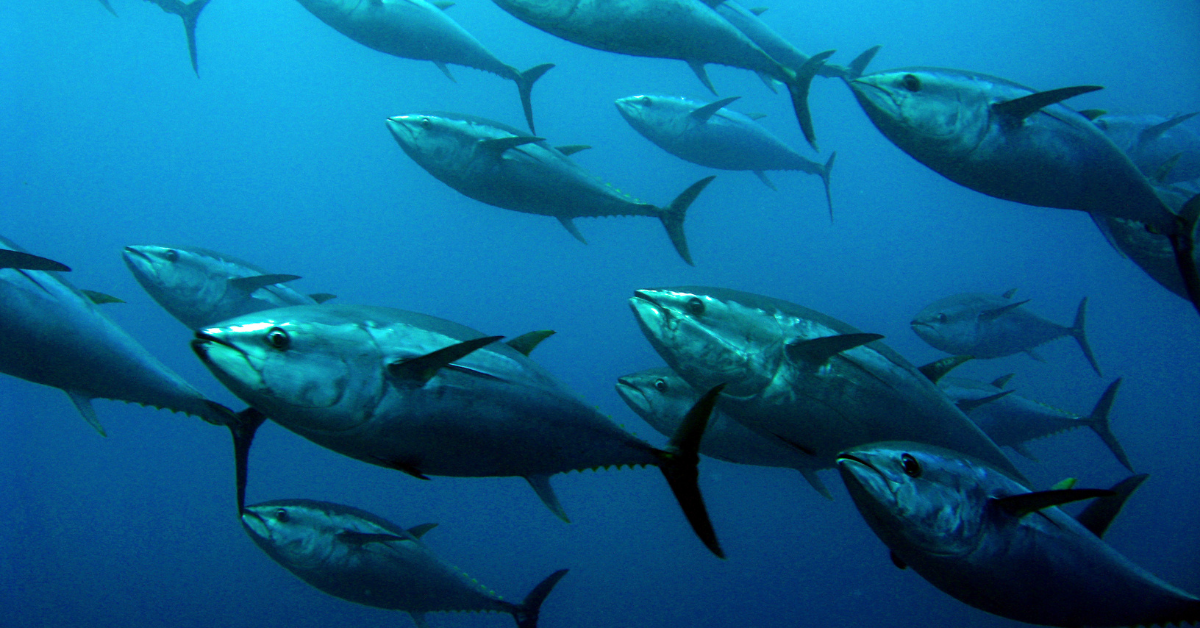Article Courtesy: coastalcarolinafisherman.com | Originally Published: 12/1/2021 | Click here for original article
The Boys in Blue are Back….The Mighty Bluefin Tuna
The Atlantic Bluefin Tuna (Thunnus Thynnus) is a mighty gamefish, competing with the Blue Marlin for such a title. Found in the western side of the Atlantic off North Carolina in the late fall,they are here now.
Typically present from late November through early April, Bluefins migrate here to feed on baitfish and are typically found in upper continental waters from 40 feet of water and east along the upper continental shelf They will eventually migrate out as water temperatures and their prey migrate. But for four months, North Carolina offers a world-class angling experience with giants reaching 1,000 lbs., and many in the 200 to 500 lb. class. For the recreational angler, the beauty and speed of this voracious finfish are literally a chance of a lifetime experience.
Bluefins are a challenge to fully understand due to their highly migratory patterns. They are a species that has total Atlantic and Caribbean geographic migration. Bluefins travel according to water regimes, prey location, and where they spawn. Off NC during late November through early April, they congregate to take advantage of the spawning Menhaden masses that congregate along the Capes from Cape Hatteras, Cape Lookout, and Cape fear. Menhaden possess a very high oil content where the Tuna fatten up for their migration to spawn.

There is agreement that Bluefin travel from the Northeast mid-Atlantic regions to the Caribbean to the Gulf to spawn in spring, but some research suggests that a common spawning ground may also exist between the Gulfstream and the mid-Atlantic region north of Hatteras. It seems that the big giants may indeed spawn in southern waters and that mid-sized fish may be associated with the northern mid-Atlantic area. Regardless, Bluefin Tuna certainly are attracted to the NC coast where the warm Gulf Stream and cooler Labrador currents collide. Bluefins are known to travel from NC towards Bermuda then to the Caribbean and Gulf and perhaps by-passing southern SC, GA., and Florida offshore. Catch reports from fishermen support this. Tuna is very adaptable to water temperatures as they generate heat in their bodies, unlike some other pelagic gamefish that are associated with strictly warmer water like billfish and dolphin. This benefits Bluefin to hunt in a variety of habitat conditions. They are totally adapted to hunt and feed in cooler water nearshore in the Carolinas.
Muti-year stomach contents of the Bluefin Tuna off Cape Lookout (research) show that the species is primarily targeting Menhaden off the Carolinas in the winter season—85% in biomass but some other species such as the Atlantic Needlefish, some squid, crab, and finfish such as Bluefish are present. I find it interesting that the gut content (from ingestion to elimination (research) of the Bluefin studied demonstrates that it takes about 20 hours from feeding to complete digestion. This shows that Bluefin off NC are daytime feeders with the maximum feeding time being between 9:00 am and 12:00 pm and from 1:00 pm and 3:OO pm. A pronounced nighttime feeding is not shown through research.

Where do they feed? Following the prey, they are found in extremely shallow waters from about 5 miles out to upper continental shelf waters around 100 feet of water in the Carolinas. They like structures with baitfish including higher relief live-bottom, wreck sites, and artificial reef structure relief.
Because Bluefins are prolific feeding machines, they are attracted to many techniques for the angler. Trolling Ballyhoo is popular as anglers can cover ground and locate bait and fish concentrations on their bottom recorders. Dead bait, chumming and other techniques are used including live bait.
If you want to Bluefin fish, consider a charter boat from experienced captains from Hatteras to Carolina Beach, NC. Or venture yourself for an incredible experience. North Carolina has it going on….a world-class Bluefin fishery!!






